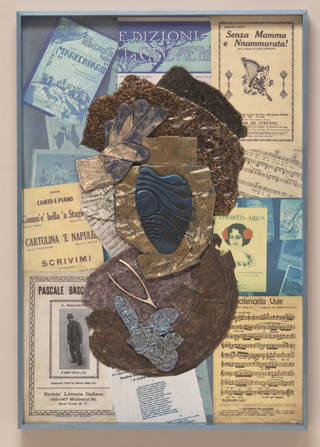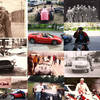2 Cities of Spontaneity, 1 Exhibit: Delirious Naples and Manic New York
By walking through either New York or Naples on any given day, certain common traits assault the pedestrian’s senses. The chaos and rapidity that circulates through these metropolitan centers is indelible, even during quiet moments, even at night. Art is everywhere—whether it is graffiti, painted murals, stunning yet decaying architecture, the fashion of the folk or the food itself. Music also pervades these cities’ veins, as spontaneous pleas to lovers or back alley karaoke cacophony, and the honking horns or subway cars of NYC seem to echo the shouting merchants or moto steering napoletani.
On the occasion of the conference “Delirious Naples: For a Cultural, Intellectual and Urban History of the City of the Sun”, which will be held at the Hofstra University Cultural Center in Long Island this November, dynamic artist B. Amore was invited to create an exhibition that celebrates the bond between Naples and NYC. She gladly embraced the challenge, and her exhibit, B. Amore: Naples—New York, will be on view from now until December 4th at Hofstra University Museum’s David Filderman Gallery, featuring two site-specific installations and over 18 other mixed media works that contemplate and evoke the essences of these notorious yet lovable cities.
Amore uses mixed media to compose the pieces in this atypical and evocative exhibit. She combines physical items, such as subway and circumvesuviana maps, Neapolitan sheet music from early 20th century New York, take-away espresso cups, mini shrines to the Madonna, keys, fabrics, and gloves in order to create stunning and original artwork that falls within the realm of 2D multimedia and sculpture. The artist integrates image, text, and sculptural elements to depict the multi-faceted lives of New Yorkers and Neapolitans. The congenial lifestyles of both cities are expressed through ‘found’ and ‘unearthed’ objects, depicting the scars of wounds that “refused” items often indicate. For as Amore asks “what tells more stories about a populace than what it throws away?”
The influence of Naples on New York culture still resonates today—from our style of ‘Italian’ food, to the communities of Italian Americans of Campanian origin. Whether we visit the Bronx’ Arthur Ave, Kesté Pizzeria in the West Village, or Graham Avenue in Italian Williamsburg (also known as Little Salerno), the sights and tastes of Naples resonate with us, sometimes in unexpected ways.
The origins of the exhibit have an interesting twist that demonstrate the kind of spontaneity that walking through the streets of Naples and New York offer the casual stroller. As Amore was walking through Spaccanapoli in 2009, she came upon some objects that one might also find randomly left behind on the streets of neighborhoods like SoHo or Chelsea in Manhattan: gloves. She envisioned that a glove from one city had its complement in the other, and in this way she facilitated the stretching of arms across the Atlantic in order to allow the gloves to metaphorically touch, celebrating the common spirit between these two cities.
Almost as a precursor to this exhibit, Amore created a multimedia exhibition based on a century of Italian immigration and the personal history of her family’s emigration to the US. The exhibit, Life line—filo della vita, premiered at the Ellis Island Museum in 2000-2001. Now Amore has masterfully interwoven the themes of immigration with the cultural backlash that visibly remains even after an ethnic group has supposedly integrated into the culture of its adopted city/country.
In connection to Amore’s exhibit, the concert Bella Notte: A Beautiful Night of Italian Song will take place at the Rochelle and Irwin Lowenfeld Conference and Exhibition Hall on November 5th at 8pm, featuring Hofstra University Department of Music faculty member Marilyn Lehman and others performing selections of Neapolitan standards and favorite Italian arias.
Discussing the artwork in her present exhibit, Amore said that: “Each piece is very individual in composition, color, and feeling. There is always something revealed and hidden—so that the pieces evoke questions and hopefully engage the viewer. This sense of questions in these pieces is an essential element: they do not fully explain themselves. The disparate materials [used] are really representative of life on the streets of both Naples and New York. So many pieces of reality rubbing up against each other. So many half-told stories intimated.”
The past and present links between Naples and New York live today in Amore’s work, and even the intangible energy of these cities becomes tactile in this unique exhibit.








































i-Italy
Facebook
Google+
This work may not be reproduced, in whole or in part, without prior written permission.
Questo lavoro non può essere riprodotto, in tutto o in parte, senza permesso scritto.